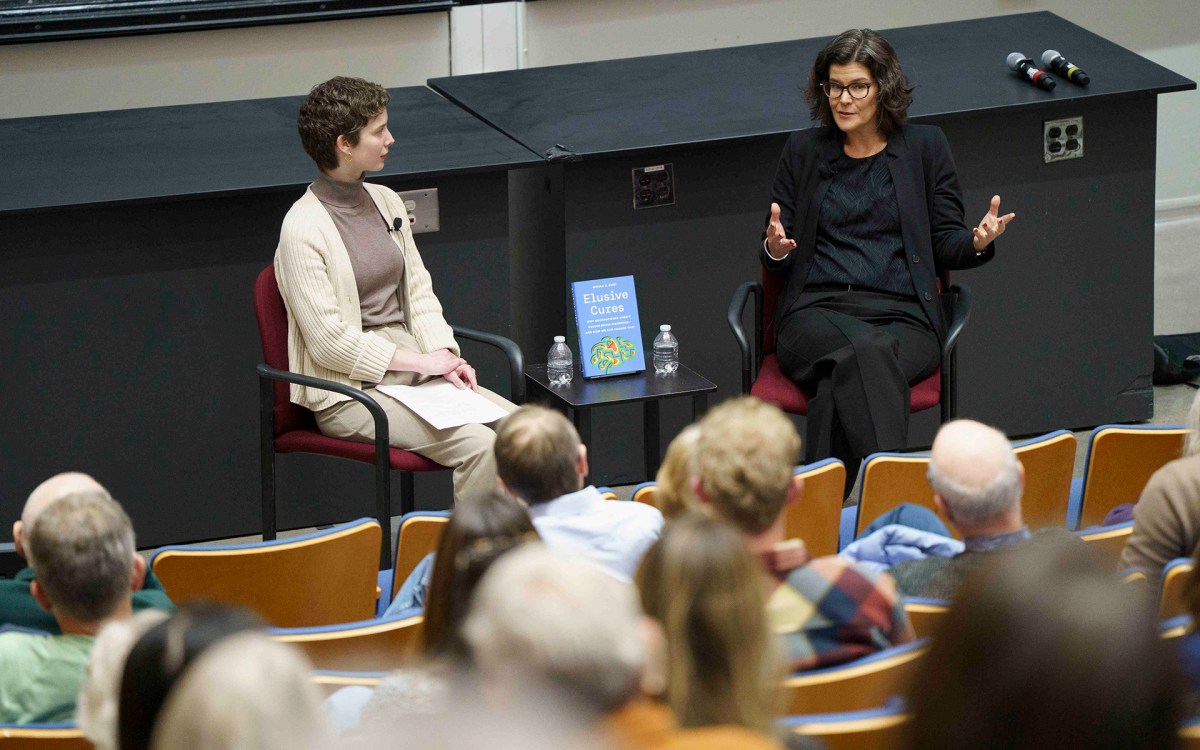Tag: Universe
-
Science & Tech
Making the immense graspable
A talk with Andrew Pontzen, author of “The Universe in a Box: Simulations and the Quest to Code the Cosmos.”

-
Science & Tech
Before the Big Bang
Harvard researchers are proposing using a “primordial standard clock” as a probe of the primordial universe. The team laid out a method that may be used to falsify the inflationary theory experimentally.
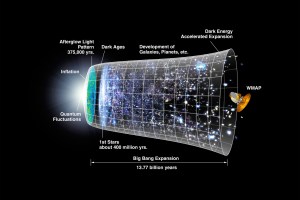
-
Science & Tech
Delving into dark matter
Harvard physicists have suggested that a disk of dark matter may lie along the center line of the galaxy.
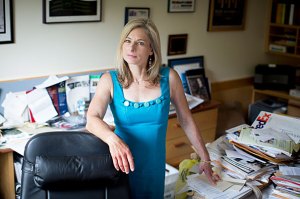
-
Science & Tech
Putting the stars within reach
Two communications specialists at the Chandra X-Ray Observatory have authored a guide to the universe, aiming to show people around a universe they say belongs to us all.
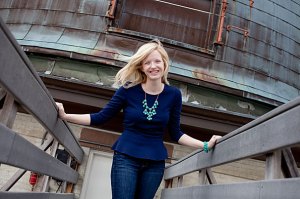
-
Science & Tech
Re-creating a slice of the universe
Scientists at the Harvard-Smithsonian Center for Astrophysics and their colleagues at the Heidelberg Institute for Theoretical Studies have made it possible to build a universe from scratch.
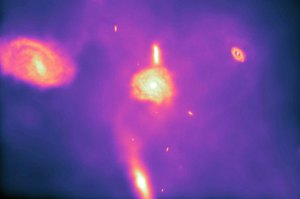
-
Health
Stars in the making
A paper authored by Harvard’s Eli Visbal with colleagues from the California Institute of Technology and Tel Aviv University suggests that it may be far easier than commonly thought to peer deep into the universe’s history and observe the telltale signs of the formation of the first stars and galaxies.
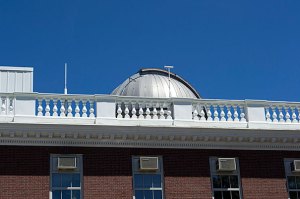
-
Campus & Community
Get ready, think big
Ten of Harvard’s great minds gathered at Sanders Theatre on Thursday (Feb. 17) for the second annual Harvard Thinks Big, a student-organized discussion in which 10 speakers each took 10 minutes to explore a topic near and dear to their hearts.
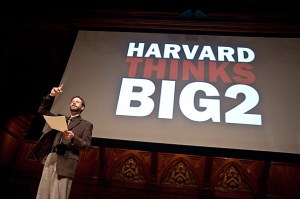
-
Campus & Community
Star count of the universe may triple, new study suggests
A study suggests the universe could have triple the number of stars scientists previously calculated.
-
Science & Tech
From the cosmos to the cell
A conference at the Radcliffe Institute for Advanced Study examined the prevalence of patterns in the natural world, from enormous ones that order the cosmos to cellular and molecular patterns in living things.
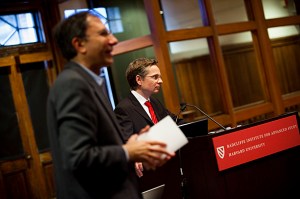
-
Science & Tech
Looking for life beyond Earth
Scientist Carolyn Porco explored the deeper regions of the solar system and her work with the Cassini mission to Saturn during a talk at Radcliffe.
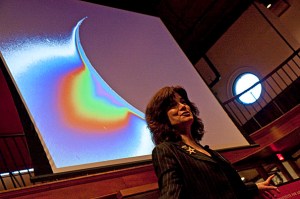
-
Science & Tech
Building a stellar time machine
Harvard researchers are building a celestial time machine that lets astronomers look back at hundreds of thousands of objects in the Earth’s skies over the past century.
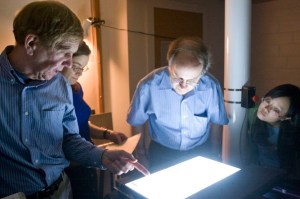
-
Science & Tech
Physics for musical masses
Harvard physicist Lisa Randall is taking Paris’ operagoing public to the fifth dimension this month, working with a composer and artist to present an opera that incorporates Randall’s theories about extra dimensions of space.
-
Science & Tech
Life in the universe? Almost certainly. Intelligence? Maybe not
We are likely not alone in the universe, though it may feel like it, since life on other planets is probably dominated by microbes or other nonspeaking creatures, according to scientists who gave their take on extraterrestrial life at Harvard last week.
-
Science & Tech
Solar system’s twin has two asteroid belts
Astronomers have discovered that the nearby star Epsilon Eridani has two rocky asteroid belts and an outer icy ring, making it a triple-ring system. The inner asteroid belt is a virtual twin of the belt in our solar system, while the outer asteroid belt holds 20 times more material. Moreover, the presence of these three…
-
Health
NYU chemist Robert Shapiro decries RNA-first possibility
Back in the depths of time, an event almost miraculously improbable happened, creating a long, unlikely molecule. And life arose on Earth. Or, if you prefer, back in the depths of time, in a soup of small, relatively common molecules, an unknown chemical reaction occurred, sustained itself, replicated … and life arose on Earth.
-
Science & Tech
Black holes are the heart of galaxies
Astronomers think that many — perhaps all — galaxies in the universe contain massive black holes at their centers. New observations with the Submillimeter Array now suggest that such colossal black holes were common even 12 billion years ago, when the universe was only 1.7 billion years old and galaxies were just beginning to form.…
-
Science & Tech
Star quest knowledge provides new view of ourselves
In a basement laboratory at the Harvard-Smithsonian Center for Astrophysics (CfA), surrounded by instruments built to detect the universe’s distant secrets, sits a machine that will help us look not outward to the stars, but inward at our own bodies.
-
Science & Tech
J. Richard Bond awarded Gruber Prize at CfA
Theoretical work on the evolution and structure of the universe landed Canadian cosmologist J. Richard Bond the 2008 Cosmology Prize of the Peter and Patricia Gruber Foundation, awarded Sept. 17 at the Harvard-Smithsonian Center for Astrophysics (CfA).
-
Science & Tech
Collider startup brings ATLAS to life
Scientists at Harvard and around the world held their breath Wednesday (Sept. 10), as colleagues switched on the most powerful particle accelerator ever built, the Large Hadron Collider at CERN, the particle physics laboratory in Geneva.
-
Campus & Community
Publications recognize three CfA astronomers
Three astronomers at the Harvard-Smithsonian Center for Astrophysics (CfA) were recently recognized for their innovative work by three leading national magazines. The trio was selected from hundreds of scientists across the country for their leadership and achievements in their respective research fields.
-
Science & Tech
CfA reveals Magellanic Clouds are first-time visitors
The Large Magellanic Cloud (LMC) and Small Magellanic Cloud (SMC) are two of the Milky Way’s closest neighboring galaxies. A stunning sight in the southern hemisphere, they were named after the Portuguese explorer Ferdinand Magellan, who explored those waters in the 16th century. For hundreds of years, these galaxies were considered satellites of the Milky…
-
Nation & World
Can science, religion coexist in peace?
Almost 14 billion years after the big bang, and 3.5 billion years since the first bacteria appeared on Earth, humans occupy just one branch of the tree of life. We share an evolutionary limb with other eukaryotes, creatures whose membrane-bound cells carry genetic material. Our biological neighbors developed over time just as we did, by…
-
Science & Tech
Measuring one of the universe’s building blocks
Only a few people think deeply about electrons. One is Gerald Gabrielse, Leverett Professor of Physics at Harvard University. In the past 20 years, he has discovered new things about them, things that even Albert Einstein never knew. And he’s trained a half-dozen young Ph.D.s in the business of how subatomic particles make the universe…
